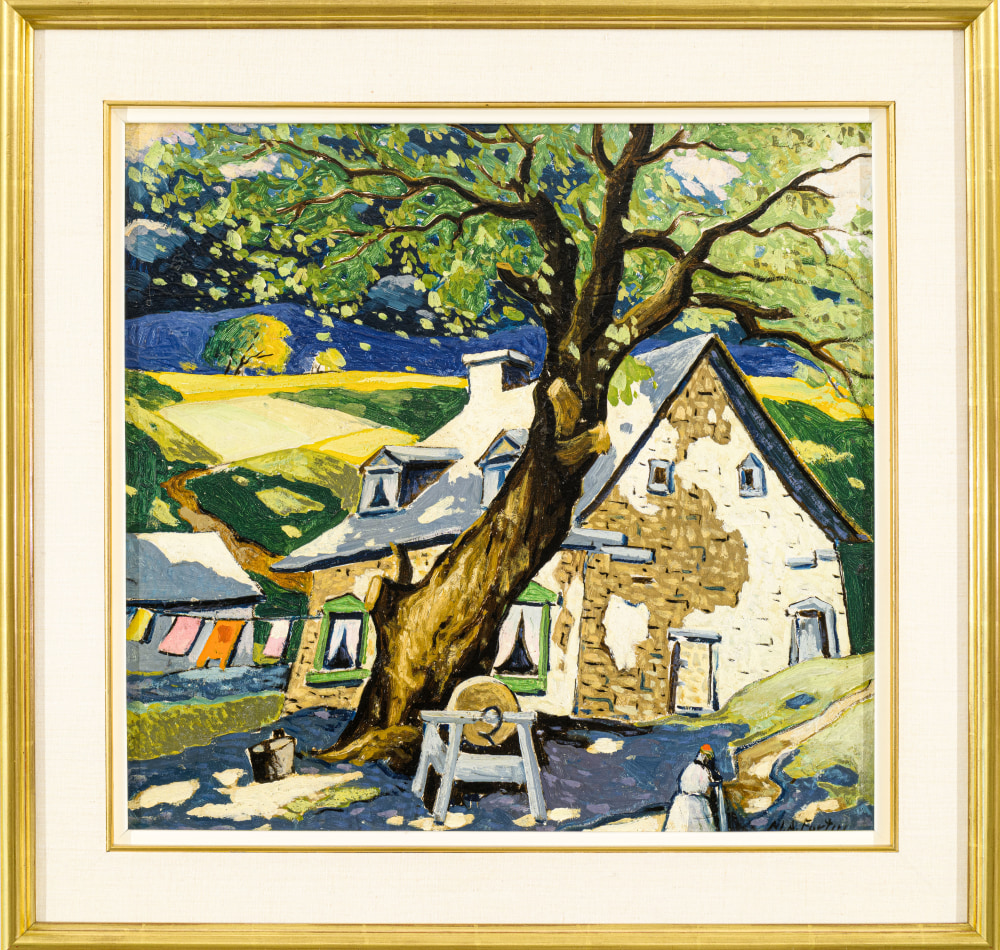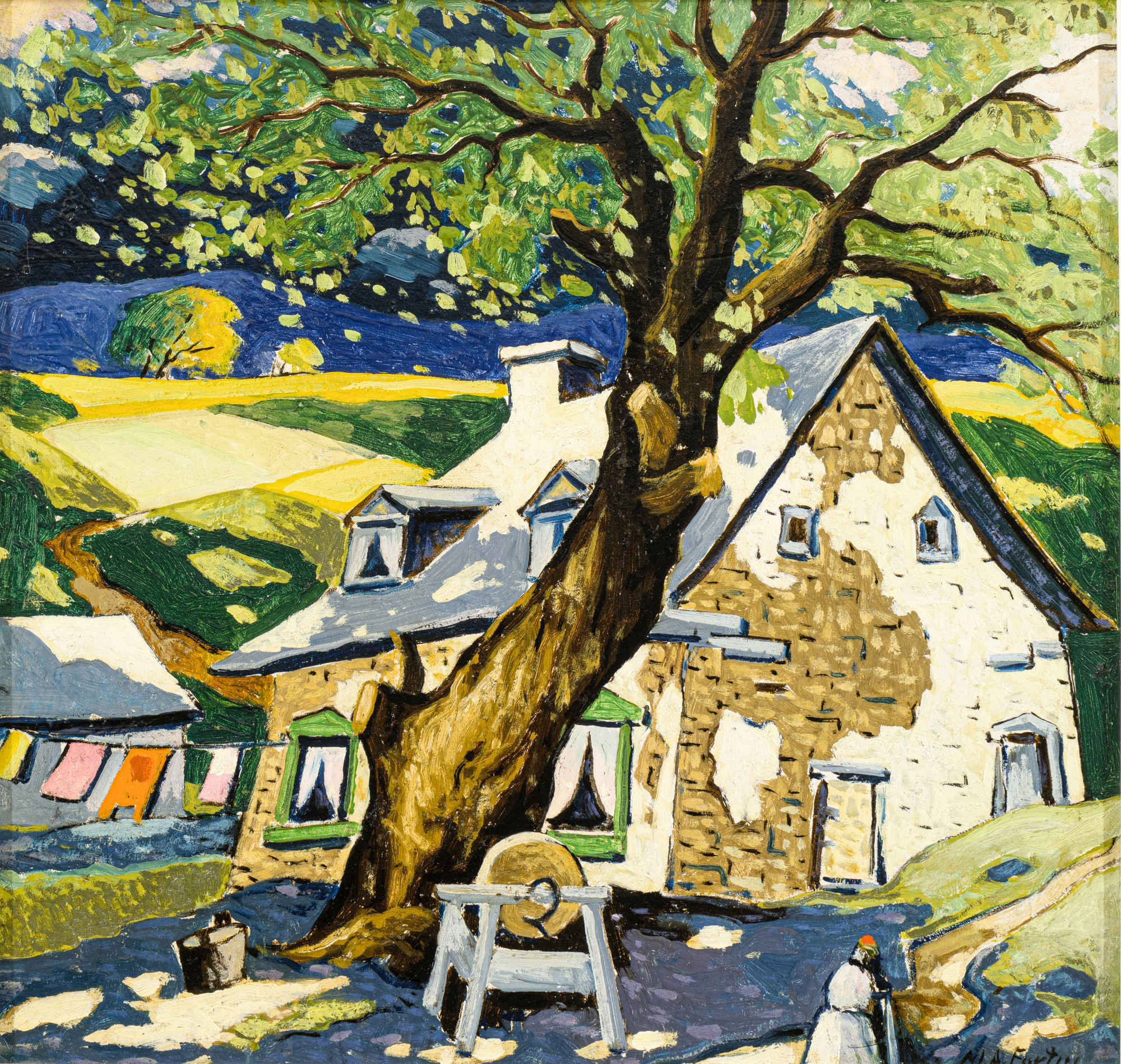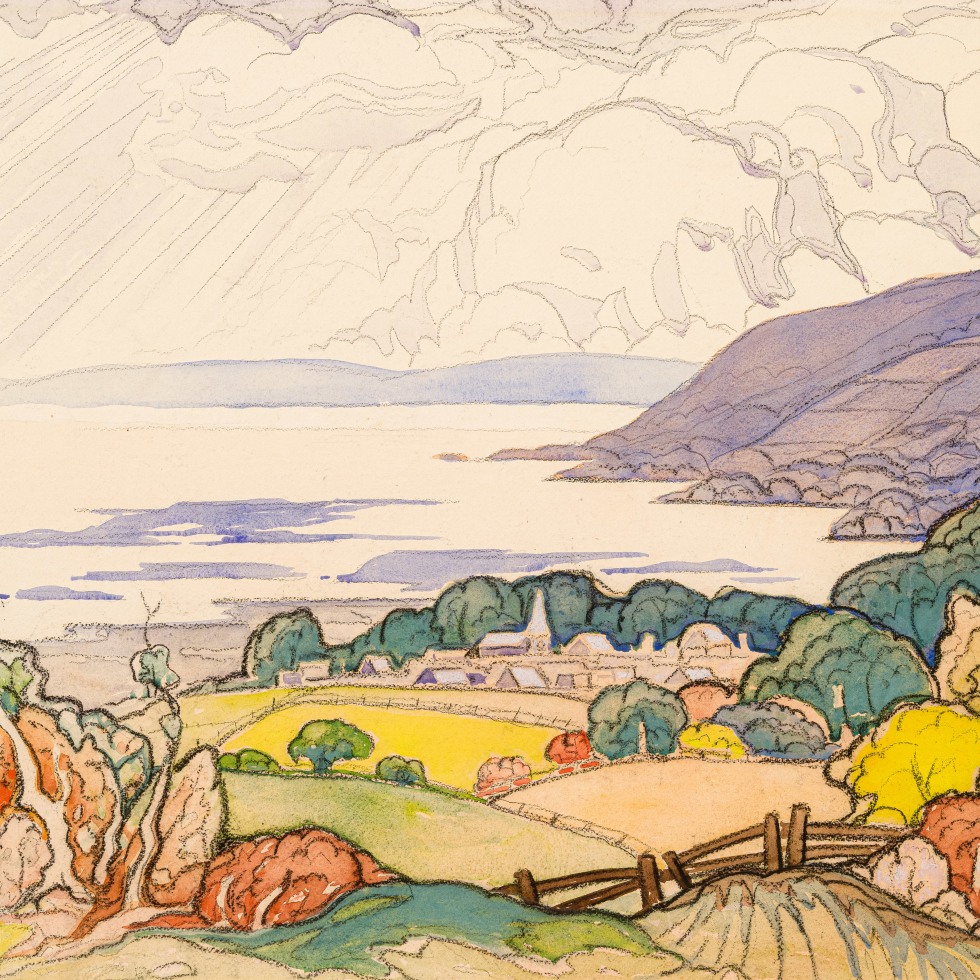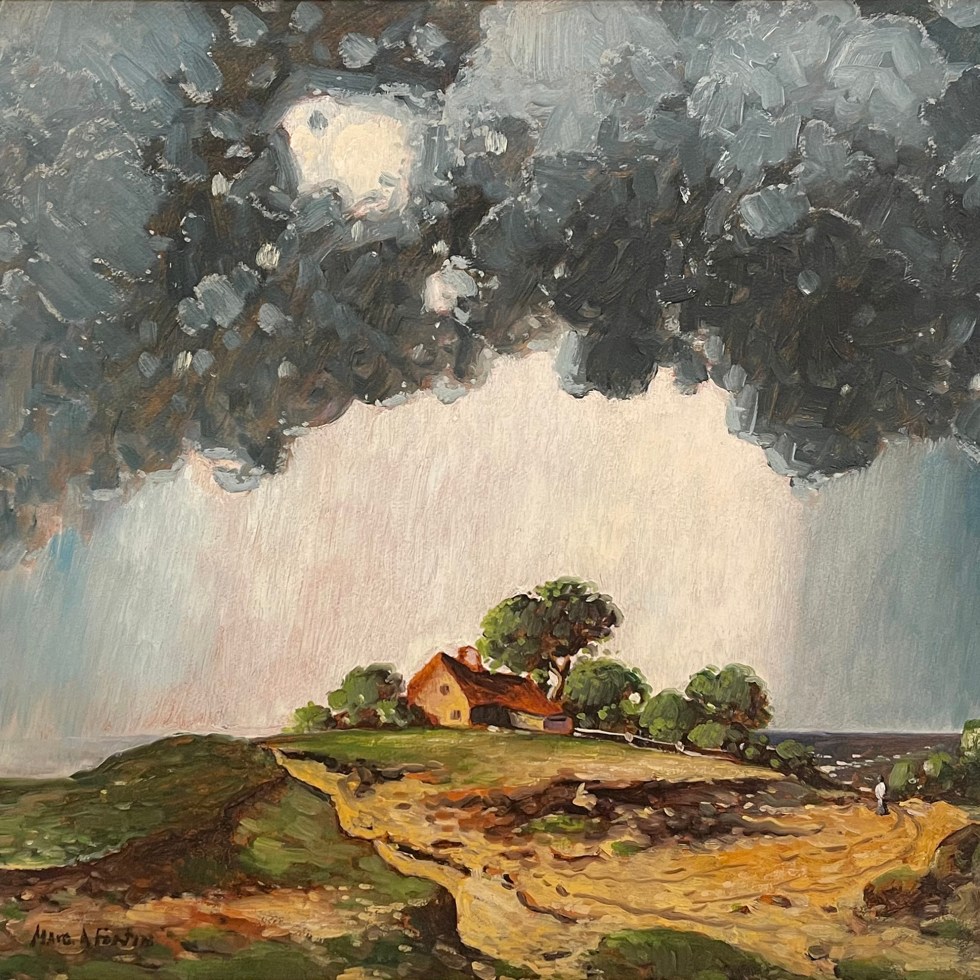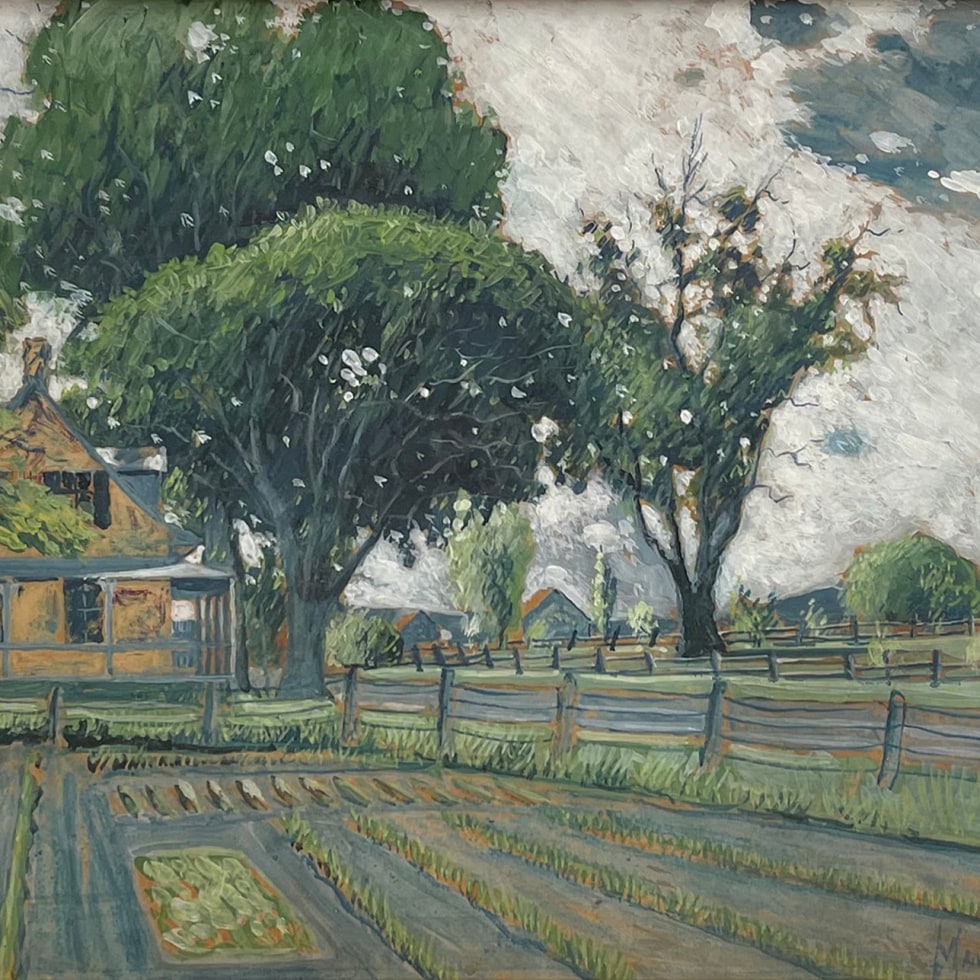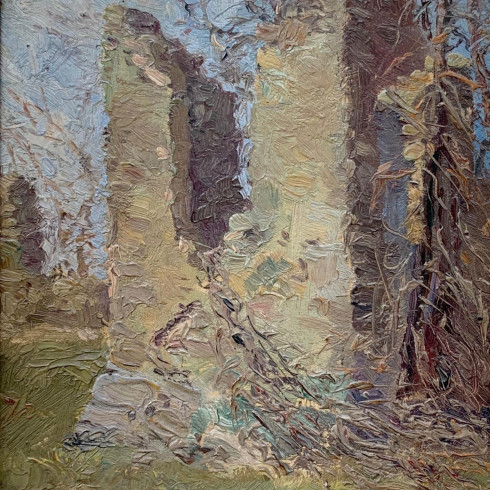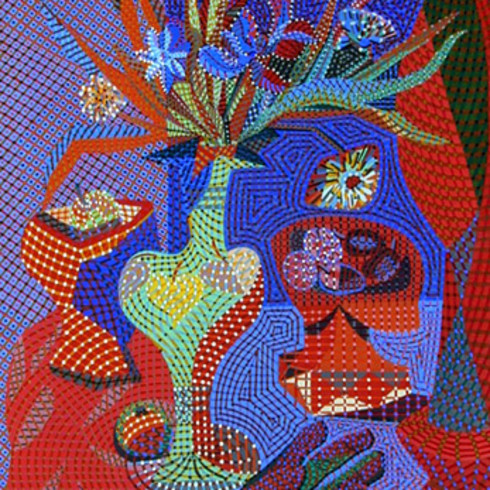Près de Lesage, 1930 (circa)
59.1 x 61 cm
Inscriptions
signed, 'M A FORTIN' (lower right)Provenance
Galerie l’art Francais, Montreal
Collection Galerie Jean-Pierre Valentin, Montreal
Property of a Distinguished Montreal Collector, 1992
Exhibitions
Montreal, Galerie L'Art Francais, circa 1945, as Près de Lesage, 1924 (circa).
Saint-Jérôme, Centre d’exposition du Vieux-Palais, Laurentides, Panorama Pictural de 1899 à nos jours, 12 January- 23 February, 1992.
Quebec City, Musée national des beaux-arts du Québec, Marc-Aurèle Fortin. The Experience of Colour, 10 February - 8 May 2011; Kleinburg, Ontario, McMichael Canadian Art Collection, 28 May -11 September 2011, cat. no. 53.
Literature
"Caractère conservé," La Presse, 1945, 15 May 1945, p.4 [reproduced].
Marius Barbeau, Painters of Quebec (Toronto: The Ryerson Press, 1946), 13 [reproduced].
Gaston Boucher, “Panorama des Laurentides au Vieux Palais: une exposition qu’il faut visiter à tout prix!”, l’Annonceur (Saint-Jérôme), 17 Janvier 1992, p.4 [reproduced].
Pierre Dupuis, “une superbe exposition montre le visage séculaire des Laurentides,” Journal l’Argenteuil (Lachute), 2 February 1992, [reproduced].
Danielle Soucy, “Les belles images des pays-d’en-Haut: Les Laurentides vues par cinq générations d’artistes," Chatelaine, February 1992, p. 22 [reproduced].
Albert Bernier, Un siècle de peinture au Québec (Montréal: Éditions de l’homme, 1999), 84 [reproduced].
Richard Foisy, François-Marc Gagnon, Michèle Grandbois, Sarah Mainguy, Esther Trépanier, Marc-Aurèle Fortin: L'expérience de la couleur, edited by Michèle Grandbois (Quebec City / Montréal, Musée national des beaux-arts du Québec : Les Éditions de l’Homme, 2011), 181, 247 [reproduced].
Près de Lesage is included in the photograph of the seated artist, on the floor, at his feet. (Fig.1)
Throughout his career, Fortin would use his artistic powers to contrast humanity and nature, with cities, towns and buildings often dominated by comparatively massive natural elements such as trees, clouds and mountains. Fortin’s use of proportion often reveals his focus. He was among those Quebec artists (see, notably, Adrien Hebert) influenced by impressionism, and simultaneously fascinated with urban growth in rapidly industrializing North America.
Esther Trépanier, who at the time was a Professor of the Department of Art History at University of Quebec, Montreal wrote an excellent essay Marc-Aurèle Fortin as Seen by His Contemporaries to accompany the 2006 Galerie Walter Klinkhoff non-selling retrospective exhibition celebrating the master. "By the end of the 1920s, Fortin was well on his way to becoming one of the artists instrumental in setting the markers of modernism in the arts as it was taking shape in Quebec.'' She continued, ''The modernism at issue was a form of expression that remained figurative yet sought to disassociate itself from academic rigidity and even occasionally from an overly repressive nationalism.” [1]
“It was in the 1920s that Fortin began to exhibit canvases in which gigantic trees encircle and almost blend into tiny houses and minuscule human forms, often simplified to an extreme. These imposing trees, so characteristic of Fortin … are among the works that the public and critics have always preferred most". [2]
______________________
Footnotes:
[1] Esther Trépanier, “Marc-Aurèle Fortin as Seen by His Contemporaries,”in Marc-Aurèle Fortin. Retrospective Exhibition, ed. Galerie Walter Klinkhoff (Montreal: Galerie Walter Klinkhoff Inc., 2006), 4.
[2] Ibid., 6.



